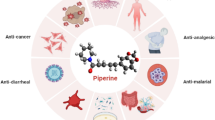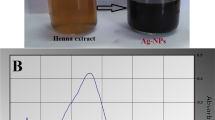Abstract
We have determined the trace element composition of anti-influenza virus mushrooms using atomic absorption spectrophotometer. The elements present in greater concentration in Ganoderma lucidum samples are selenium, iron, and zinc, with selenium being the element with the highest concentration of all, at 416 ± 38.5 mg/kg; in Cordyceps militaris samples are iron, selenium, and zinc, with iron being the element with the highest concentration of all, at 291 ± 20.9 mg/kg; in Kuehneromyces mutabilis samples are selenium, iron, and manganese, with selenium being the element with the highest concentration of all, at 203 ± 9.8 mg/kg; in Inonotus hispidus samples are zinc, selenium, and iron, with zinc being the element with the highest concentration of all, at 194 ± 16.9mg/kg; in the Collybia maculata samples are iron, selenium, and zinc, with iron being the element with the highest concentration of all, at 274 ± 22.2 mg/kg, respectively. The average metal concentrations in mushrooms decreases in the order: selenium > iron > zinc > chromium > manganese > copper > magnesium > lead. After the mice were administered (orally) with mushroom extracts for 8 weeks and inoculated intranasally with viral suspension, element levels in serum were also measured. Highly significantly increased values of Se, Zn, and Mg in the serum of mice supplemented with anti-influenza virus mushrooms were a characteristic finding. Se, Zn, and Mg present in mushrooms may play a direct or indirect role in their anti-influenza virus nature. They may provide prophylactic protection against influenza infection via stimulation of host innate immune response.

Similar content being viewed by others
References
Wasser SP (2002) Medicinal mushrooms as a source of antitumor and immunomodulating polysaccharides. Appl Environ Microbiol 60:258–274
Zjawiony JK (2004) Biologically active compounds from Aphyllophorales (polypore) fungi. J Nat Prod 67:300–310
Petrova RD, Wasser SP, Mahajna JA, Denchev CM, Nevo E (2005) Potential role of medicinal mushrooms in breast cancer treatment: current knowledge and future perspectives. Int J Med Mushrooms 7:141–156
Zaidman BZ, Yassin M, Mahajna J, Wasser SP (2005) Medicinal mushroom modulators of molecular targets as cancer therapeutics. Appl Microbiol Biotechnol 67:453–468
Lindequist U, Niedermeyer TH, Julich WD (2005) The pharmacological potential of mushrooms. Evid Based Complement Altern Med 2:285–299
Petrova RD, Mahajna J, Reznick AZ, Wasser SP, Denchev CM et al (2007) Fungal substances as modulators of NF–kB activation pathway. Mol Biol Rep 34:145–154
Yassin M, Mahajna JA, Wasser SP (2003) Medicinal mushroom extracts selectively inhibit proliferation and induce differentiation of K562 human chronic myelogenous leukemia blast cells. Int J Med Mushr 5:259–274
Wasser SP, Weis AL (1999) Therapeutic effects of substances occurring in higher Basidiomycetes mushrooms: a modern perspective. Crit Rev Immunol 19:65–96
Han C, Cui B, Wang Y (2008) Vanadium uptake by biomass of Coprinus comatus and their effect on hyperglycemic mice. Biol Trace Elem Res 124:35–39
Han C, Yuan J, wang Y (2006) Hypoglycemic activity of fermented mushroom of Coprinus comatus rich in vanadium. J Trace Elem Med Biol 20(3):191–196
Celik HA, Aydin HH, Ozsaran A, Kilincsoy N, Batur Y, Ersoz B (2002) Trace elements analysis of ascitic fluid in benign and malignant diseases. Clin Biochem 35(6):477–481
Narendhirakannan RT, Subramanian S, Kandaswamy M (2005) Mineral content of some medicinal plants used in the treatment of diabetes mellitus. Biol Trace Elem Res 103:109–115
Han C, Li J, Hui Q (2008) Determination of trace elements in Jinqi, a traditional Chinese medicine. Biol Trace Elem Res 122(2):122–126
Rajurkar NS, Damame MM (1998) Mineral content of medicinal plants used in the treatment of diseases resulting from urinary tract disorders. Appl Radiat Isot 49:773–776
El-Mekkawy S, Meselhy MR, Nakamura N, Tezuka Y, Hattori M, Kakiuchi N et al (1998) Anti-HIV-1 and anti-HIV-1-protease substances from Ganoderma lucidum. Phytochemistry 49:1651–1657
Mothana RAA, Awadh NAA, Jansen R, Wegner U, Mentel R, Lindequist U (2003) Antiviral lanostanoid triterpenes from the fungus Ganoderma pfeifferi BRES. Fitoterapia 74:177–180
Koh JH, Kim JM, Chang UJ, Suh HJ (2003) Hypocholesterolemic effect of hot-water extract from mycelia of Cordyceps sinensis. Biol Pharm Bull 26:84–87
Huang BM, Hsu CC, Tsai SJ, Sheu CC, Leu SF (2001) Effects of Cordyceps sinensis on testosterone production in normal mouse Leydig cells. Life Sci 69:2593–2602
Huang BM, Chuang YM, Chen CF, Leu SF (2000) Effects of extracted Cordyceps sinensis on steroidogenesis in MA-10 mouse Leydig tumor cells. Biol Pharm Bull 23:1532–1535
Chen YJ, Shiao MS, Lee SS, Wang SY (1997) Effect of Cordyceps sinensis on the proliferation and differentiation of human leukemic U937 cells. Life Sci 60:2349–2359
Kuo YC, Tsai WJ, Shiao MS, Chen CF, Lin CY (1996) Cordyceps sinensis as an immunomodulatory agent. Am J Chin Med 24:111–125
Kuo YC, Tsai WJ, Wang JY, Chang SC, Lin CY, Shiao MS (2001) Regulation of bronchoalveolar lavage fluid cell function by the immunomodulatory agents from Cordyceps sinensis. Life Sci 68:1067–1082
Ohta Y, Lee JB, Hayashi K, Fujita A, Park DK, Hayashi T (2007) In vivo anti-influenza virus activity of an immunomodulatory acidic polysaccharide isolated from Cordyceps militaris grown on germinated soybeans. J Agric Food Chem 55:10194–10199
Mentel R, Meinsen D, Pilgrim H, Herrmann B, Lindequist U (1994) In vitro antiviral effect of extracts of Kuehneromyces mutabilis on influenza virus. Pharmazie 49:859–860
Awadh Ali NA, Mothana RA, Lesnau A, Pilgrim H, Lindequist U (2003) Antiviral activity of Inonotus hispidus. Fitoterapia 74(5):483–485
Leonhardt K, Anke T, Hillen-Maske E, Steglich W (1987) 6-Methylpurine, 6-methyl-9-b-d-ribofuranosyl-purine, and 6-hydroxymethyl-9-b-d-ribofuranosyl-purin as antiviral metabolites of Collybia maculata (basidiomycetes). Z Naturforsch C 42:420–424
Falandysz J (2008) Selenium in edible mushrooms. J Environ Sci Health C 26:256–299
Niu Z, Liu F, Yan Q, Li L (2009) Effects of different levels of selenium on growth performance and immunocompetence of broilers under heat stress. Arch Anim Nutr 63(1):56–65
Ganz T (2009) Iron in innate immunity: starve the invaders. Curr Opin Immunol 21(1):63–67
Hirano T, Murakami M, Fukada T, Nishida K, Yamasaki S, Suzuki T (2008) Roles of zinc and zinc signaling in immunity: zinc as an intracellular signaling molecule. Adv Immunol 97:149–176
Zha L, Zeng J, Sun S, Deng H, Luo H, Li W (2009) Chromium(III) nanoparticles affect hormone and immune responses in heat-stressed rats. Biol Trace Elem Res 129(1–3):157–169
Son EW, Lee SR, Choi HS, Koo HJ, Huh JE, Kim MH, Pyo S (2007) Effects of supplementation with higher levels of manganese and magnesium on immune function. Arch Pharm Res 30(6):743–749
Senthilkumar P, Nagalakshmi D, Ramana Reddy Y, Sudhakar K (2009) Effect of different level and source of copper supplementation on immune response and copper dependent enzyme activity in lambs. Trop Anim Health Prod 41(4):645–653
Ichinohe T, Lee HK, Ogura Y, Flavell R, Iwasaki A (2009) Inflammasome recognition of influenza virus is essential for adaptive immune responses. J Exp Med 16:79–87
Acknowledgment
This research was supported by the Foundation for Outstanding Young Scientist in Shandong Province (BS200702011), Natural Science Foundation of Shandong Province (Q2008D07), and the S&T plan projects of Shandong Provincial Education Department (J10LC08).
Author information
Authors and Affiliations
Corresponding author
Rights and permissions
About this article
Cite this article
Wang, L., Hou, Y. Determination of Trace Elements in Anti-influenza Virus Mushrooms. Biol Trace Elem Res 143, 1799–1807 (2011). https://doi.org/10.1007/s12011-011-8986-0
Received:
Accepted:
Published:
Issue Date:
DOI: https://doi.org/10.1007/s12011-011-8986-0




